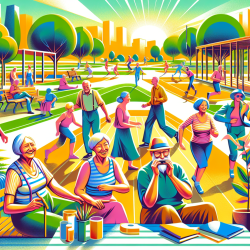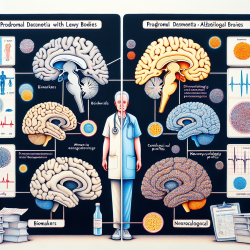The Power of the Built Environment: Transforming Older Adults' Outdoor Activity
As practitioners in the field of speech-language pathology and therapy services, we understand the importance of evidence-based practices. Recent research by Winters et al. (2015) sheds light on how the built environment influences outdoor walking among older adults, offering valuable insights for practitioners aiming to enhance physical activity in this demographic.
Understanding the Research
The study titled Older adults’ outdoor walking and the built environment: does income matter? explores the association between neighborhood walkability, measured by the Street Smart Walk Score, and outdoor walking among older Canadians. The research highlights that a higher Walk Score is linked to increased odds of meeting physical activity guidelines through outdoor walking. Interestingly, the study found no significant moderation by household income, suggesting that walkability benefits transcend socioeconomic barriers.
Key Findings
- A 10-point increase in the Street Smart Walk Score is associated with a 17% higher likelihood of meeting physical activity guidelines through outdoor walking.
- Older adults in neighborhoods classified as a "Walker's Paradise" are over three times more likely to meet these guidelines compared to those in car-dependent areas.
- Household income does not significantly moderate the relationship between Walk Score and outdoor walking, indicating that improvements in neighborhood walkability can benefit all income levels.
Implications for Practitioners
For practitioners, these findings underscore the importance of advocating for and designing walkable environments to promote physical activity among older adults. Here’s how you can implement these insights:
- Advocate for Walkable Communities: Encourage community planners and policymakers to prioritize walkability in urban design. Highlight the benefits of increased physical activity and improved health outcomes for older adults.
- Incorporate Walkability Assessments: Utilize tools like the Walk Score to assess the walkability of neighborhoods where your clients reside. This can help tailor interventions that encourage outdoor walking.
- Promote Awareness: Educate clients and their families about the benefits of living in walkable neighborhoods and how it can enhance their physical and mental well-being.
Encouraging Further Research
While this study provides valuable insights, it also opens the door for further research. Practitioners are encouraged to explore how specific features of the built environment, such as sidewalk conditions and access to parks, influence walking behavior. Additionally, investigating the role of personal preferences and mobility aids can provide a more comprehensive understanding of how to support older adults in achieving active lifestyles.
To read the original research paper, please follow this link: Older adults’ outdoor walking and the built environment: does income matter?










